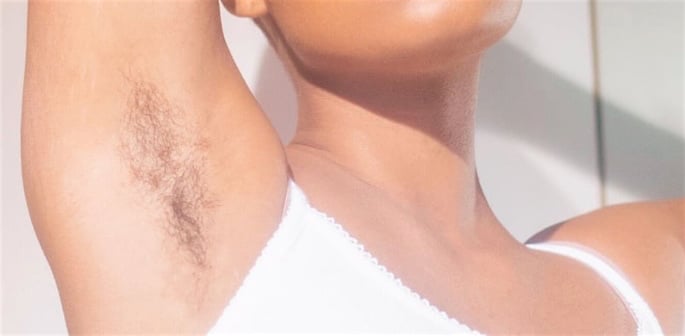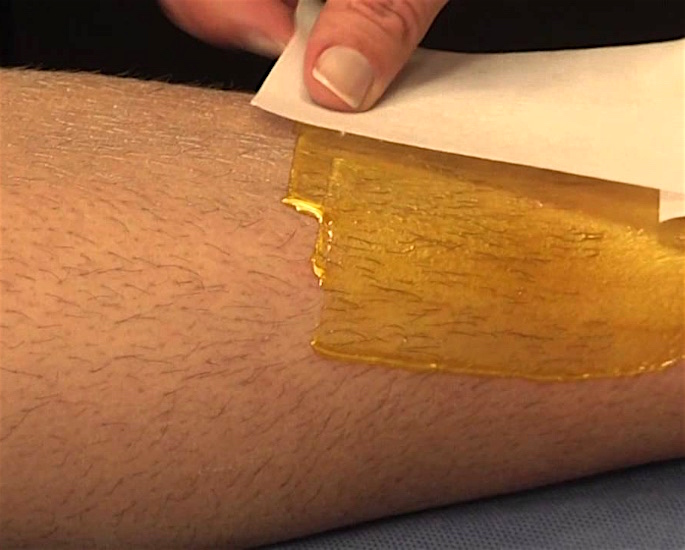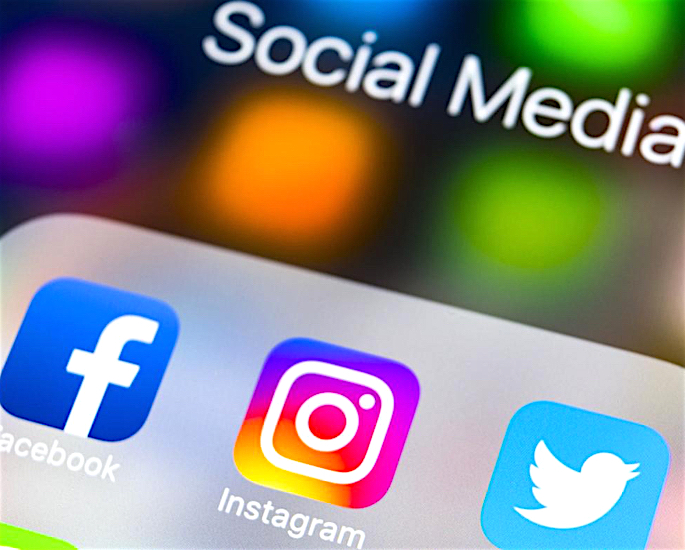Hairlessness in the Desi community is associated with femininity and beauty. How has this societal expectation affected Desi women?
October 23, 2020

“I didn’t look like the women I saw on social media."
Body hair and its link to body image is a complex and multi-dimensional concept faced by Desi women who often struggle with accepting their body hair.
The history of body hair has varied among cultures over time. People’s acceptance (or hatred) of body hair has been dictated by beauty standards of the time.
Community variations in attitudes about the thickness, colour, length and amount of hair are constructed by several elements, including cultural and societal pressures.
Everyone develops hair all over their bodies, typically after puberty. Body hair assists our body in not only regulating its temperature but also in protecting us from exterior components such as dirt.
At an evolutionary level, body hair simply protects us.
Despite this, Desi women across the world voluntarily use a variety of methods in attempts to get rid of their body hair. It is an inconvenient, painful and expensive process – and one that is rarely permanent.
We explore the factors which contribute towards body image issues in relation to hair for Desi women and discuss whether that image is shifting or gaining strength.
Why do Desi women spend so much time and energy removing Body Hair?

The answer lies in cultural beauty standards. Since 3000 BC, razors have been used to remove body hair. Archaeologists have traced some of the earliest tweezers to Egypt and India.
The removal of body hair became a trend in the west during the early 1900s.
Related Reads
In 1915, a woman named Gillette Milady created the first women’s razor due to the recent trend of sleeveless blouses and dresses.
The Gillette razor advert calls razors the solution to an “embarrassing personal problem” – referring to armpit hair.
Advertisements portrayed body hair as ugly, unwanted and unfashionable. One advertisement wrote with the tagline, “Let’s look at your legs – Everyone else does.”
These messages were not subliminal. They were loud and clear: female body hair was unattractive, dirty and disconcerting for the male gaze.
During this time, western society began to attribute body hair as a negative characteristic, something to be hidden.
Hairlessness became associated with femininity, thus cementing gender into societal beauty standards.
Body hair soon became synonymous with masculinity, whereas smooth, hair-free skin became a more beautiful, soft, feminine characteristic. Since then, shame has been cast onto women for their body hair.
According to a report by Inc:
“The beauty industry makes billions in cash revenue each year for body waxing and laser hair removal services alone.”
This does not include the extra money they receive from hair removal creams, threading services, tweezing and more.
Desi women began to feel ashamed of their body hair. Family scorn, wedding pressure, and more recently, social media, have all played their part in manifesting a negative opinion towards body hair.
For decades, Desi women have deeply internalised this norm. This dissatisfaction towards our own bodies can lead to several issues such as low self-esteem, depression, anxiety and much more.
The effect of harbouring a negative body image towards something completely natural can impact the quality of life.
But why does body hair play such an important role in reflecting our definition of self-worth and wider acceptance? Who are women trying to please when removing their hair?
Wedding Pressure

The bride is traditionally expected to adhere to social standards of beauty, irrespective of its prejudice.
Desi women are usually expected to be fair, slim and hair-free for their wedding night. This mindset has been embedded into young girls’ minds by parents since childhood.
Although time has progressed, it can be argued that little has evolved concerning South Asians’ mindset towards marriage and the image that the woman should reflect.
Even in this modern progressive time, the matrimonial website shaadi.com only recently removed its skin tone feature.
As a company that has influenced matchmaking for “more than 35 million lives”, their specification features show that their remains a desire for a certain “type” of woman that is deemed ideal.
Consequently, it is clear that there is an ultimate goal for parents which is simply accepted or enforced onto their girls. Desi parents are typically truly content when their child marries.
With this pressure comes the stress of looking acceptable, dazzling enough to impress your in-laws.
In turn, this can gravely impact your perceptual body image (the way you view yourself) and your confidence.
The expectation of being free from thick, rough or dark body hair can harm your self-esteem.
Having “smooth” and “hair-free” skin is definitely desirable by some and this is not hidden by potential partners or parents.
Raveena Singh from Punjab married her husband at just age 18. She clearly remembers a conversation with her mother a few weeks prior to her marriage. She exclusively says to DESIblitz:
“My mother and my aunty came into my room one day. They had the wax strips in their hand. It hurt a lot.
“My skin became blotchy and red instantly but apparently it was necessary because my husband wouldn’t want me any other way.”
Similarly, Jaspreet Patel from the UK also felt the pressure of removing her hair, although she had never given it a second thought before.
“I always had quite dark body hair – I am Indian after all! But I never really cared about it too much as all my friends were the same.
“I was conscious that it was on other areas like my stomach, but I wasn’t too bothered about it.
“Just before I got married though, my older sisters spoke to me about hair removal options. They said it so matter-of-factly like they weren’t ripping a normal part of me away.
“I developed a lot of body image issues since then. I have even tried laser now.”
A central concern here is that Jaspreet never had any issues with her body prior to her wedding.
It was only when becoming a prospective bride was she warned of being trolled for her appearance, ultimately leading to self-doubt and a decline in self-confidence.
DESIblitz also spoke to 42-year-old Anika. She says:
“I got married over 15 years ago. I have always had hair that plagued my entire body.
“My own family made joking comments about it when I was little, my cousins laughing and point at my ‘beard’.”
“I always hated the hair on my body and wondered why I couldn’t have soft, smooth skin like my Caucasian friends at school.
“At about 9 years old I started using hair removal cream on my underarms. It smelled awful.
“At 12 years old a boy at school made fun of me for having a moustache. I cried for days and used to use dad’s razor.
“When my rishta time arrived, I was determined to look like how I always dreamed.”
“I wanted the hair off my face.”
Anika says that looking back now she wished she was just more confident in herself.
Her hair was “probably not that thick” and she found it only became thicker when she used those “hair-removal” products.
Desi women continue to feel the pressure of looking “clean” and “feminine” on their wedding day. It continues to be a top requirement alongside the usual housewife tropes.
Not only is this troubling for Desi women, but it upholds an unnatural ideal for Desi men when it comes to searching for marriage partners.
Social Media and Global Advertising

The rise of Instagram especially has created an unreal “reality” of filtered images that people aspire to emulate and match.
People spend hours each day scrolling through social media pages and consuming billboard and television advertisements where images of people’s bodies are posted everywhere.
The rise of the “celebrity influencer” in recent years has seen a surge in the beauty industry as more women and girls are flocking to health and beauty brands in the hope of attaining these “picture perfect” bodies.
But what do these “picture perfect” bodies look like?
When you type in the hashtag, “#bikinigirl” into Instagram, you will see over 4.9 million posts on your screen.
A particular body image overtakes the feed: pictures of fair-skinned, slim, highly-defined female physiques – all with no body hair in sight.
Continuously digesting these filtered photos on a daily basis can lead to a distorted reality of what our bodies should look like.
According to a post-graduate student at the University of Nottingham, Lily Yang says that people are comparing themselves to what they consume through the media. She said:
“I have seen a rise in mental health cases in young girls whereby they are striving for a sense of perfection that doesn’t exist.
“They judge themselves too harshly against edited images and this is causing an obsession-based epidemic.”
Despite the goal of this hashtag trying to inspire people to travel and enjoy beautiful destinations across the world, it can instead, seriously harm one’s mental wellbeing.
The unrealistic beauty standards set by models and influencers alike have seen a rise in body image struggles.
We spoke exclusively to 22-year-old Samia, who admitted that she suffers from depression concerning her visual appearance.
“During my adolescent years, I was obsessed with Instagram and magazines. The models would flaunt their perfect skin which led me to body shame myself.
“My friends were all white and when we started going out to clubs they just did one quick shave and were all set for a week!
“For me, a Pakistani woman with dark black hair since birth, this was impossible. I felt embarrassed to wear revealing clothes, so I often wore tights or long sleeves.
“I felt so inadequate because of my hair problem.”
“I didn’t look like the women I saw on social media. I didn’t look like my friends. I struggled for a very long time and I still do to be honest.
“I am a proud feminist but often feel like it’s wrong for me to still want to get rid of my body hair.
“There’s a part of me that still feels like I need to get rid of it as soon as I see it starting to grow back.”
It appears that social media and advertisements retain a huge influence on women.
According to Emotion Matters, a study shows that “88% of women compare themselves to the images they see.” Over half state that the comparison is a disagreeable one.
Emotion Matters highlight that visually processing other bodies on social media involves processing your own body.
For example, on social platforms, certain body types are prioritised as ideal body types. If bodies without hair are idealised and receive more likes or attention, these will appear more on your feed.
These social norms impact how we view bodies because “humans in general need to gain the approval of others.” As a result, you might try and conform to their social norms relating to body hair.
Jess, 19-year-old from Wolverhampton, says that social media has made her despise her body hair in the past. She said:
“I was about 13 when I got my eyebrows and moustache threaded for the first time. A boy in my class said I looked more “dateable” now. I was elated by this.
“I thought I wasn’t attractive to boys. I had hair on the sides of my face, my back, my stomach. I felt manly. I could never wear a bikini to the pool as my hair would have been too exposed. I hated it.
“I started waxing quite young as well. My mum bought me do-it-at-home strips and I would sit on my bed and wax my legs and arms. I tried it all: razors, wax, veet to get that perfect hairless look I saw plastered over Instagram.
“I developed red spots over my skin and the pain was immense, but I didn’t care. I was hairless for a few blissful weeks until it started to grow back thicker.”
“Now I struggle to uphold this beauty standard. It’s unnatural to go to such lengths to get rid of it. It hurts and is way too expensive.”
Jess says she is still in her one-piece bathing suits but is learning to love herself and her hair again. She says her “stomach still flips when someone stares at her upper lip for too long” but she is less afraid of it now.
She praises feminist movements and accounts on Instagram which have made her feel like “things are changing in a good way.”
Bollywood

With countless actresses endorsing hair removal products and signing deals with brands like Unilever, there is no doubt that Bollywood plays a role in the conversation surrounding body hair.
Whilst leading actors are often seen with hairy chests and rugged beards in Bollywood films, the actress is always perfectly groomed and rarely seen with hair on the body or face. She is always seen as flawless.
Stars like Priyanka Chopra, Kareena Kapoor and Deepika Padukone are inspirational figures for millions of women.
In Bollywood, the heroine is someone who is fair-skinned, slim and well-groomed.
This is emphasised with directors who draw attention to their bodies. Cameras regularly zooming in on faces for audiences to see no moustache, sideburns or excessive hair.
In dance sequences, the camera often focuses in on the centre of the torso to show hair-free stomachs.
This causes women to feel “othered” if their bodies don’t match the standard set by the film industry, leading to cruel jokes.
That is not to say that this is intentional. Whether filmmakers intended to set a beauty standard or not, there is no questioning that it has been received that way.
Sara, 25, speaks exclusively to DESIblitz and says:
“As a first-generation immigrant to the UK, my family always had Hindi films on in the house.
“We would watch the beautiful dancing of Madhuri Dixit and visit the cinema to watch hits like Kabhi Khushi Kabhie Gham (2001).
“The men in that film fawn over Kareena Kapoor who attains the unattainable body of the time. Her clothing accentuates her lack of body hair. As a child, this stood out to me.”
It is clear that this has a lasting effect on female audiences. It is only further highlighted as a beauty standard when such actresses endorse hair removal products.
Sara goes on to tell us:
“The older I got the more I learned about loving your body hair. I have tried really hard to step away from the mindset that Bollywood told me I should have.
“I have stopped getting more laser treatments as it just didn’t work for me. I now spend more time scrolling through accounts that celebrate body hair and I feel happier.”
“Some days I do feel extremely self-conscious about the hair on my face and hands in particular.
“But actresses like Rashami Desai who have spoken out about mental health have really helped me with my own confidence.”
Body hair and the pressures to zap it all away are not uncommon in the Desi community. However, it is a topic which is still difficult for people to talk about.
Often, it is largely something that one deals with on their own or mutedly confides in a close friend about.
It is a battle for many Desi women who not only face pressure from the global standard of beauty, but within their own families too.
Nonetheless, it is integral to remember that this social construct does not define you.
Whether you want to get rid of all your body hair or stick with it, it should be your choice without pressure from exterior influences.
Shanai is an English graduate with an inquisitive eye. She is a creative individual who enjoys engaging in healthy debates surrounding global issues, feminism and literature. As a travel enthusiast, her motto is: “Live with memories, not dreams”.






































